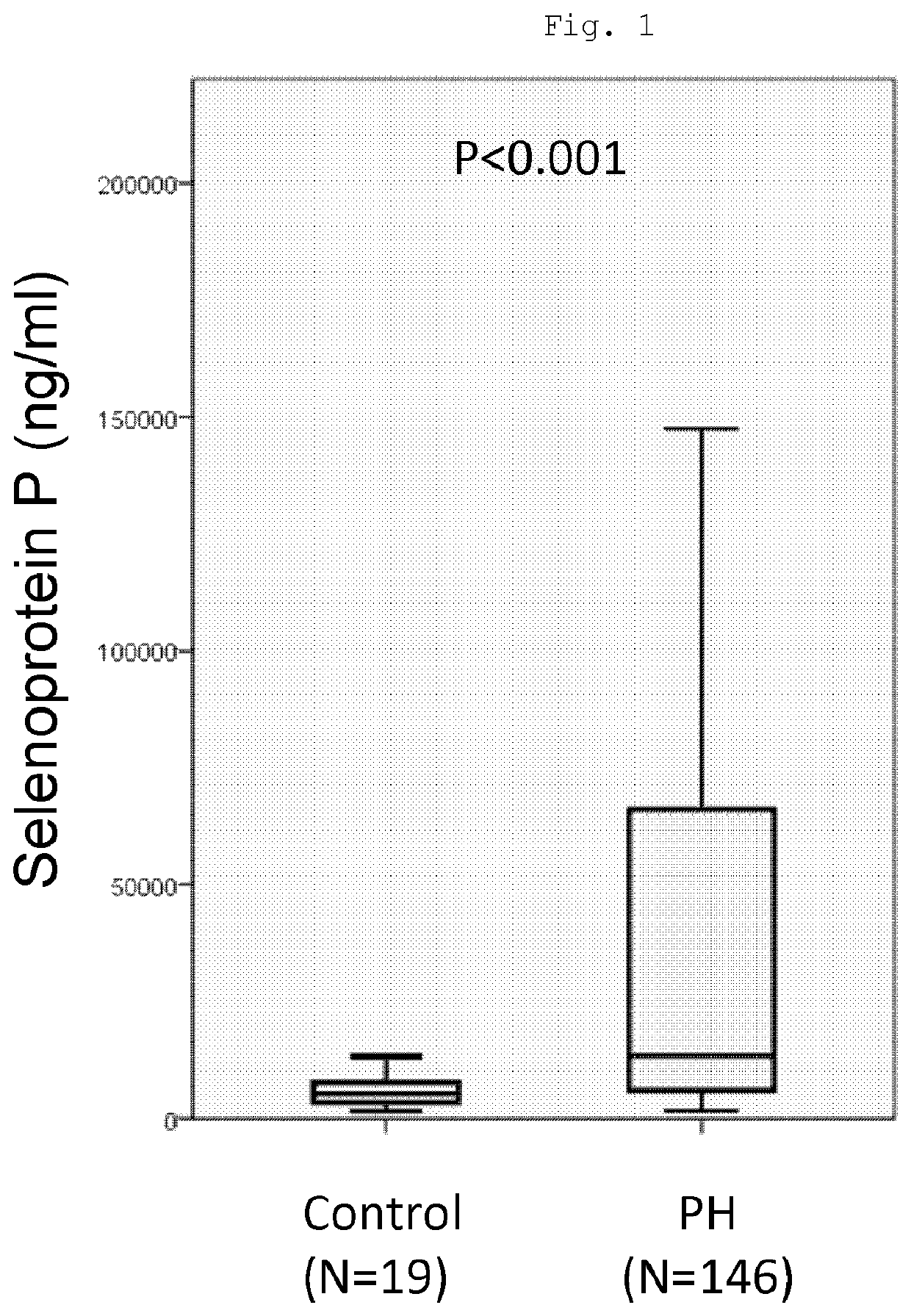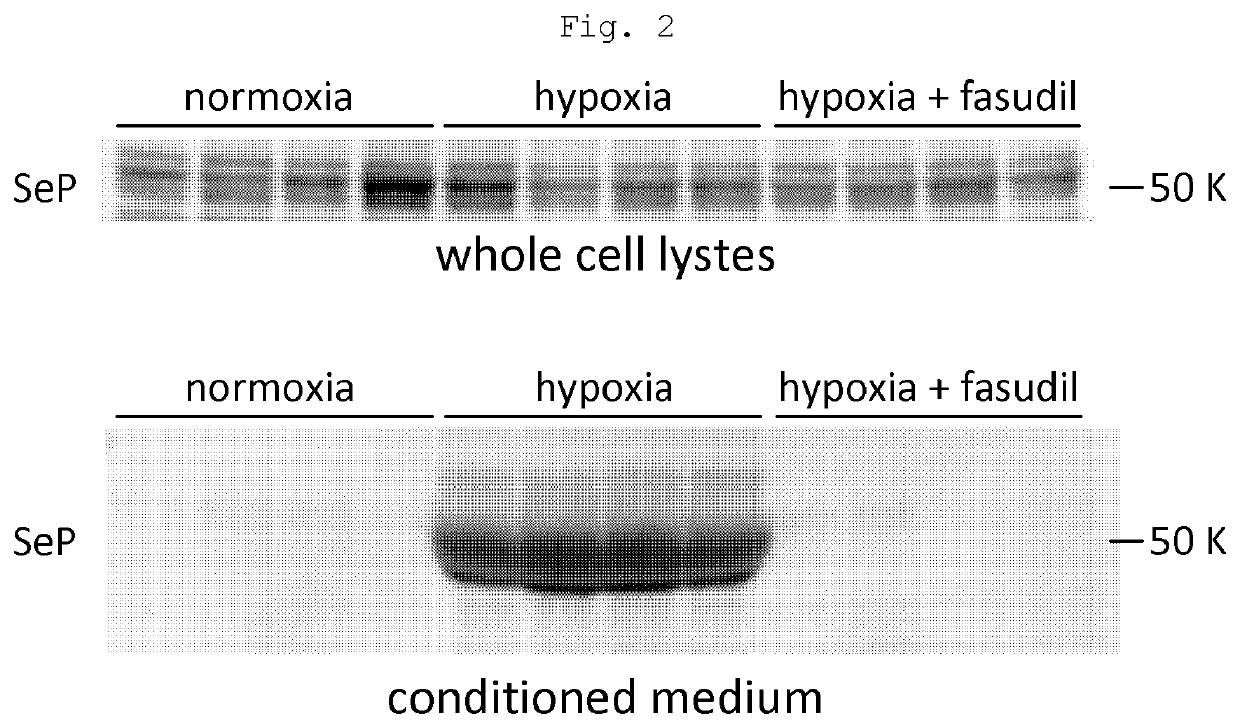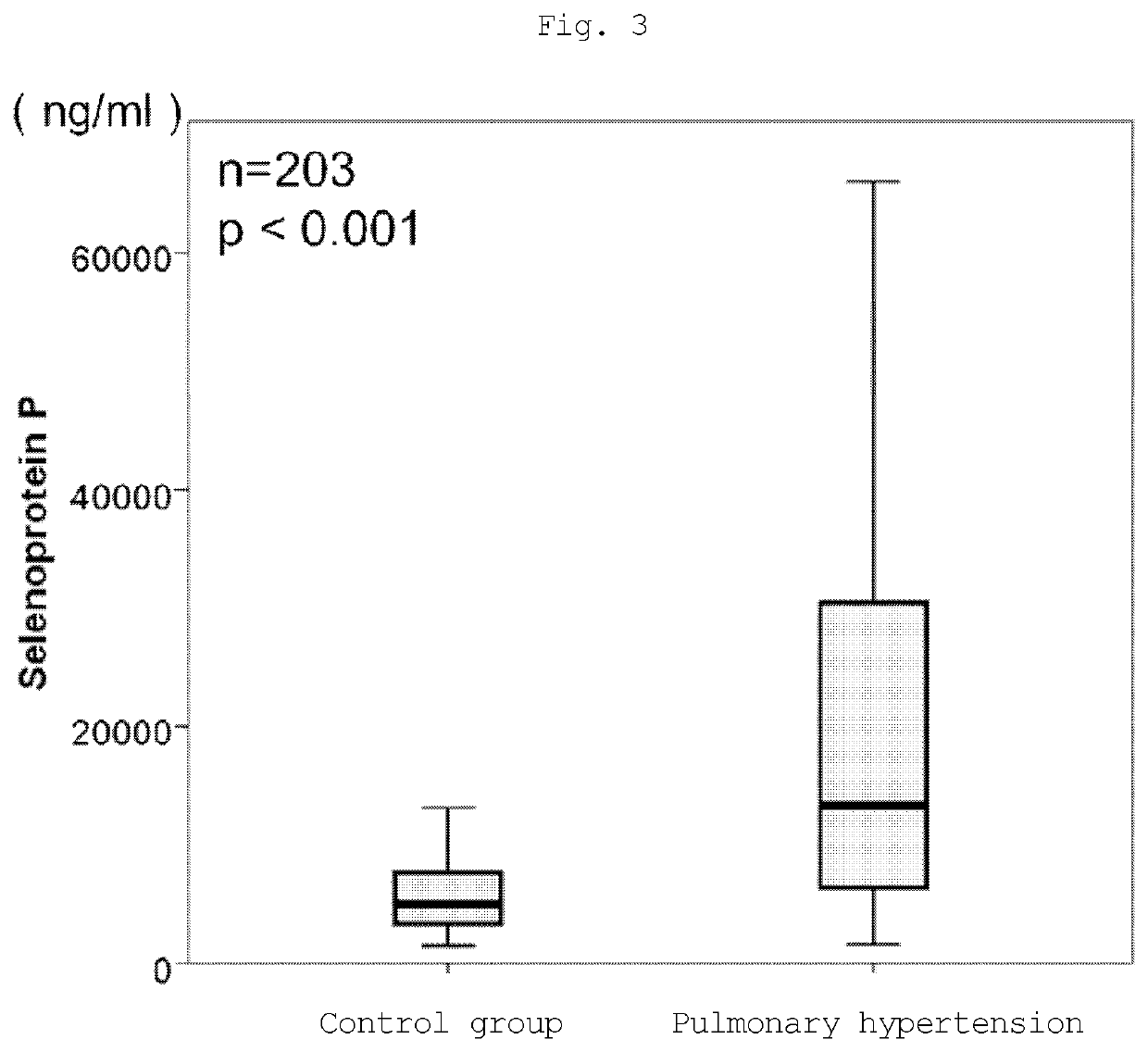Method of testing for pulmonary hypertension
a pulmonary hypertension and pulmonary hypertension technology, applied in the field of pulmonary hypertension testing, can solve the problems of difficult early diagnosis, limited number of donors, and frequent death due to right heart failure, and achieve the effect of effective therapy early, easy and accurate testing, and low burden
- Summary
- Abstract
- Description
- Claims
- Application Information
AI Technical Summary
Benefits of technology
Problems solved by technology
Method used
Image
Examples
example 1
[0091]The plasma concentration of selenoprotein P protein in pulmonary hypertension patients and non-pulmonary hypertension patients was measured. The pulmonary hypertension patients as subjects were patients diagnosed as having pulmonary arterial hypertension.
[0092]The blood sampled from the following patient groups was subjected to testing.
[0093](i) Non-pulmonary hypertension patient (non-PH) group (control group): 19 persons (a group of healthy subjects who were suspected of having a heart disease and underwent a thorough examination, including cardiac catheterization, and in whom no lesion was observed); and
(ii) a group of pulmonary hypertension (PH) patients: 146 persons.
[0094]This research was approved beforehand by the Medical Ethics Committee of Tohoku University, and performed with the informed consent and approval of every patient.
Method
[0095]Plasma was separated from peripheral vein-derived blood samples and pulmonary artery-derived bloo...
example 2
Hypertension Test
[0097]The plasma concentration of selenoprotein P protein was measured in pulmonary hypertension patients and in non-pulmonary hypertension patients in the same manner as in Example 1.
[0098]The blood sampled from the following patient groups was tested.[0099](i) Non-pulmonary hypertension patient (non-PH) group (control group): 20 persons; and[0100](ii) pulmonary hypertension patient (PH) group: 183 persons.
[0101]The detailed breakdown of the pulmonary hypertension patients is as follows:[0102]connective tissue disease [CPAH; Group 1, 4)-1, Nice Classification]: 25 persons;[0103]chronic thromboembolic pulmonary hypertension [CTEPH; Group 4, Nice Classification]: 51 persons;[0104]idiopathic pulmonary arterial hypertension [IPAH; Group 1, 1, Nice Classification]: 58 persons;[0105]pulmonary hypertension associated with lung diseases and / or hypoxemia [Lung-PAH; Group 3, Nice Classification]: 10 persons;[0106]pulmonary hypertension associated with unknown mu...
reference example 1
[0112]The response of pulmonary artery smooth muscle cells (PASMC) in idiopathic pulmonary arterial hypertension (IPAH) patients (hereinafter also referred to as IPAH-PASMC) to hypoxia stimulation was observed.
Material
[0113]Primary cell lines were established from pulmonary vascular smooth muscle in idiopathic pulmonary arterial hypertension patients, in accordance with the following document: Ogawa A, Nakamura K, Matsubara H, Fujio H, Ikeda T, Kobayashi K, Miyazaki I, Asanuma M, Miyaji K, Miura D, Kusano K F, Date H, Ohe T, Circulation, 2005; 112: 1806-1812. The pulmonary vascular smooth muscle in idiopathic pulmonary arterial hypertension patients was isolated from pulmonary arteries having an outer diameter of 1.5 mm or less.
Culture Conditions
[0114]IPAH-PASMC was cultured in D-MEM medium supplemented by 10% FBS (fetal bovine serum) at 37° C. under constant temperature and constant humidity conditions at 95% air and 5% CO2 in accordance with a usual method. In this test, passage 4...
PUM
 Login to View More
Login to View More Abstract
Description
Claims
Application Information
 Login to View More
Login to View More - R&D
- Intellectual Property
- Life Sciences
- Materials
- Tech Scout
- Unparalleled Data Quality
- Higher Quality Content
- 60% Fewer Hallucinations
Browse by: Latest US Patents, China's latest patents, Technical Efficacy Thesaurus, Application Domain, Technology Topic, Popular Technical Reports.
© 2025 PatSnap. All rights reserved.Legal|Privacy policy|Modern Slavery Act Transparency Statement|Sitemap|About US| Contact US: help@patsnap.com



